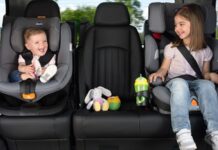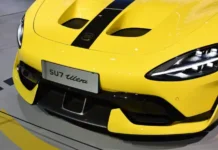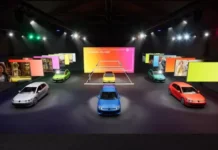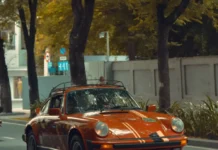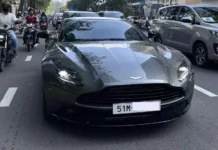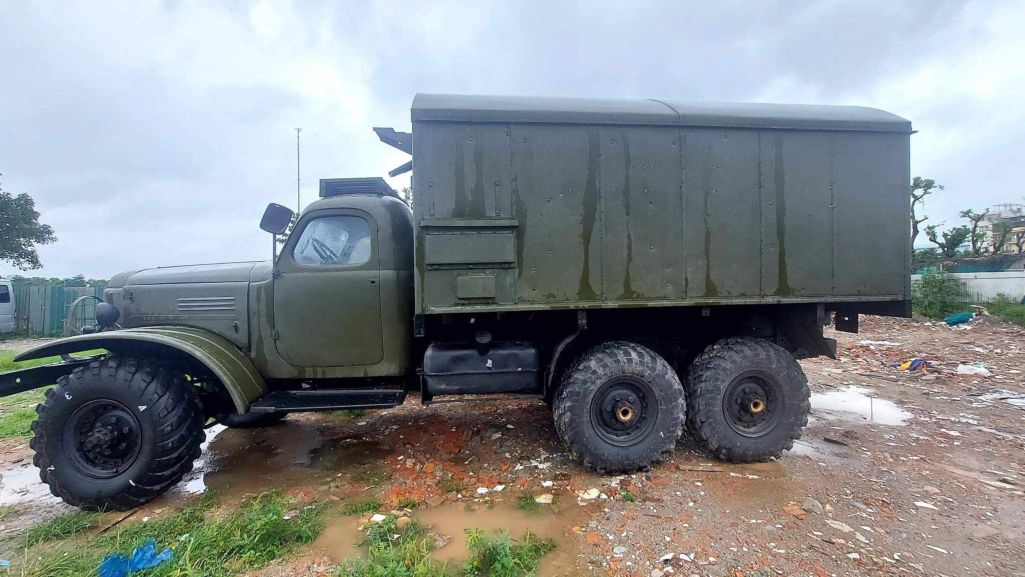We all have learned and heard the poem when we were young going to school:
The above verses belong to the poem “The no-glass car platoon” by poet Pham Tien Duat written in 1969 on the Truong Son road, during the fierce resistance war against America. The poem is part of the poem cluster awarded the first prize in the 1969 Literature and Arts Poetry Contest, published in the book “Moonlight and Firelight”. The poem somewhat depicts the image of the military transport vehicles, the vehicles that once traveled along the Truong Son road, contributing significantly to the historic victory of the nation.
The Truong Son road is a road network consisting of 5 vertical systems, 21 horizontal systems in the Eastern and Western Truong Son with a total length of nearly 20,000 km; 1 “closed” road over 3,140 km long. There is also a river road system nearly 500 km long. Among them, on August 9, 1964, the 98th Battalion, Heroic Unit carried out the first mechanized road opening on Truong Son. By October 25, 1965, the first convoy of trucks transported goods to the battlefield, marking the beginning of mechanized transportation on Truong Son.
Thanks to the mechanized transportation route, we have transported millions of people belonging to various branches, forces to the battlefield along this road. Dozens of divisions, main forces have been transported flexibly to the battlefield within a lightning-fast time of 4 days, replacing the previous 4 to 5 months. On average, we transport more than 1 million tons of goods: weapons, material resources, food, medicine, ammunition on the 20,000 km road segment, promptly providing support to the frontline in the South… In 1974 alone, the amount of goods transported was 22 times higher than in 1966. In the General Offensive and Uprising Campaign in the spring of 1975, the Truong Son Corps ensured traffic on the entire Highway 1 and 7 and other road routes, with a total length of 2,577 km, using over 1,000 vehicles.
ZIL is the abbreviation for the “Likhachev-named plant”, a long-standing automobile manufacturing enterprise of the former Soviet Union and present-day Russia. This famous factory was named after the last name of the leading designer of the Soviet automotive industry Ivan Alekseevich Likhachev (1896-1956). The Zil157 truck was produced at the Likhachop plant, the Zil-157 truck is a model produced to replace the Studebaker US6 – the main transport vehicle in the Soviet army during World War II. Only in 1957 did the new project become a reality with the first Zil three-axle truck. A peak of Soviet technology. The 6×6 off-road truck with three drivetrains, an excellent synchronizer differential between axles. Furthermore, some versions of it were equipped with self-inflating tire devices while driving (later as a platform for development on the Zil-131 truck).
In Vietnam, the Zin 157 is also called the Zil three-axle truck, which quickly became a hero on the legendary Truong Son road during the years of the resistance war against the US to save the country. The 3-axle Zil with dimensions of length: 6.684m; width: 2.315m; height: 2.36m, 5.6-liter engine, 109 horsepower. It is a peak of Soviet technology.
After its birth, the Zil 157 truck won a “big prize” (grand prix) at the 1958 Brussels International Auto Exhibition. The Zil 157 truck was primarily designed to be a strategic truck used by the Soviet military, but it was also used for many other military variations such as mounting Cachiusa rockets, towing artillery… Both the Soviet Union and China have transferred both types of vehicles to Vietnam. Since they are mass-produced, Chinese-produced vehicles can also use Soviet vehicle parts, which helps Vietnamese mechanics repair vehicles more easily when they are damaged.
The Zil 157 and Liberation CA 30 models look almost exactly alike, except for the square shock absorbers instead of the circular ones, and both models were used extensively by the Vietnamese People’s Army in the Vietnam War and the border wars in the Northwest and Southwest and international duty in Cambodia and continue to transport soldiers and supplies today.
During transportation, the soldiers of the Vietnamese army created additional supports made of bamboo to camouflage themselves from the bombs and bullets of the enemy. After thousands of kilometers of climbing mountains, crossing rivers, going through tunnels under bomb rain, the Zil 157 vehicles still exist there as evidence, representing the “wild warriors” in the Vietnam War. Who would have thought that tiny Vietnamese women could conquer such large vehicles without power-assisted steering, heavy shifting, big tires… to use them to transport goods and troops to the beloved South, braving the bomb and bullet rain of the enemy.
This vehicle has also been composed as the song “I am Zil three-axle truck” by musician Tran Tien, adapted from the poem by poet Pham Tien Duat, with simple and strong lyrics: “I am a Zil three-axle truck/ Yes, strong like a Zil three-axle truck/ With my big platoon/ I am respected like the platoon leader…”. Since then, the song has been sung in every unit, echoing throughout the Truong Son forest with the applause of the comrades as a tribute to the heroism of the iconic vehicle that tirelessly transported goods and troops to the beloved South day and night.
Today, in many military units, although they are of old age, Zil 157 vehicles still patiently serve the soldiers in peacetime training. In addition, there are still a few Zil 157 vehicles being liquidated by state agencies and they are always of interest to collectors due to their rarity. Recently, on social media, a military truck model that is associated with the achievements and legends on the historic Truong Son trail of the Vietnamese People’s Army has appeared. Although they have gone through periods of use, preservation, and have a long lifespan, with the hands and minds of soldiers and the motto “love the vehicle like a child, treasure gasoline like blood”, the vehicles are always ensured to be in the best condition and cleanest, ready to perform duties when needed.
Binh Nguyen (Tuoitrethudo)




